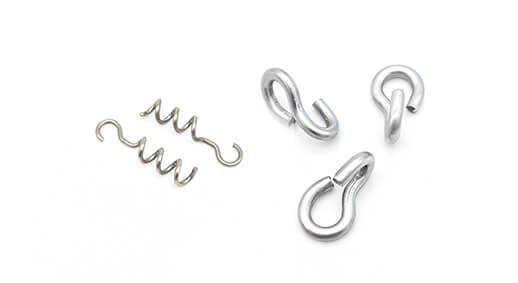Get unique, complex parts easily. No matter your requirements, Chaoyi Spring creates hard-to-produce coil springs and wire forms.
Let us help you create the custom wire form you need, from S-hooks and J-hooks to utility hooks and more.
We work closely with customers across a wide range of industries, helping them design and manufacture made-to-order parts.
Why choose Chaoyi Spring? We prioritize customer-focused collaboration, modern equipment and the latest technology to make your parts per print.
Find the information and guidance you need, from measuring a spring to learning about materials, placing an order and much more.
When it comes to the world of springs, choosing the right type for a specific application is crucial. Two common types of springs, tension springs and torsion springs, each have


When it comes to the world of springs, choosing the right type for a specific application is crucial. Two common types of springs, tension springs and torsion springs, each have unique characteristics that make them suitable for different tasks. Understanding the differences between these springs is essential for engineers and designers seeking to optimize their designs and ensure optimal performance. This article will delve into the intricacies of tension and torsion springs, exploring their functionalities, applications, and key distinctions.

Tension springs, also known as extension springs, are designed to resist pulling or stretching forces. Imagine a rubber band, where you apply force at both ends to extend it – that's the principle behind tension springs. These springs are typically coiled with their turns touching in their relaxed state. When a force is applied, the coils separate, and the spring elongates. The force required to stretch the spring increases proportionally to its extension, following Hooke's Law.
Tension springs find a wide range of applications in various industries. Some common uses include:
In contrast to tension springs, torsion springs work by resisting twisting forces. Picture a spring in a retractable pen – when you twist the pen, the spring inside resists that rotation. Torsion springs are usually coiled with their ends fixed, and they exert a torque when twisted. The torque generated by a torsion spring is proportional to the angle of twist, following Hooke's Law.
Torsion springs are versatile components used in numerous applications, including:
While both tension and torsion springs rely on the principle of elasticity, several key differences set them apart:
When deciding between a tension spring and a torsion spring, it's essential to consider the specific needs of your application. Ask yourself:
By carefully evaluating these factors, you can select the spring that best suits your application and ensures optimal performance.
Tension and torsion springs are both essential components in a wide range of applications, each serving a distinct purpose. Understanding the differences between these springs is crucial for engineers, designers, and anyone working with spring-based systems. Choosing the right spring type can ensure proper functionality, enhance performance, and optimize the overall design of any project that relies on the power of springs.
In the world of engineering and design, springs are often the unsung heroes, quietly working behind the scenes to ensure proper operation and functionality. Whether it's the gentle pull of a tension spring or the precise twist of a torsion spring, these versatile components play a critical role in countless applications. By understanding the unique characteristics and applications of each spring type, engineers can choose the optimal spring for their projects, guaranteeing reliable performance and efficient operation.
Browse some of the custom wire forms and springs that we manufacture. Don’t see what you need? We specialize in made-to-order products that meet your application requirements.
Visit Our GalleryNeed a custom wire form or coil spring? We make it work. Fill out the contact form and a representative will respond within 1 business day. If you have a PDF or CAD file, you can submit to request a quote.